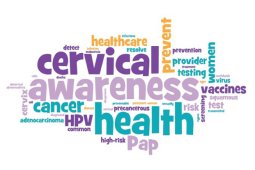Categories
- Bariatric Surgery (11)
- Black Fungus (5)
- Bone Marrow transplant (3)
- Brain Tumor Surgery Navigation Technology (20)
- Cardiac Surgery (66)
- Cardiology (97)
- Computer navigation technology for joint replacements (20)
- Covid Vaccination (17)
- Critical Care (2)
- Dental (19)
- Dermatology (31)
- Dialysis Support Group - “UTSAAH” (11)
- Dietitian (33)
- Emergency Medicine (4)
- Emotional Health (11)
- Endocrinology (33)
- ENT (20)
- Gastroenterology and GI Surgery (53)
- General and Laparoscopic Surgery (21)
- General Surgery (4)
- Gynecology & Obstetrics (183)
- Hematology (20)
- Internal Medicine (294)
- Kidney Transplant (50)
- Kidney Transplantation (20)
- Lung Cancer (8)
- Minimal Invasive Surgery (1)
- Mother & Child (20)
- mucormycosis (5)
- Nephrology (61)
- Neurology (147)
- Neurosurgery (68)
- Nutrition and Dietetics (107)
- Omicron Variant (1)
- Oncology (288)
- Ophthalmology (10)
- Orthopaedics & Joint Replacement (86)
- Paediatrics (59)
- Pediatric Nephrology (3)
- Physiotherapy (5)
- Plastic & Reconstructive Surgery (6)
- Psychiatry and Psychology (90)
- Psychologist (28)
- Pulmonology (72)
- Rheumatology (13)
- Spine Services (21)
- Transradial Angioplasty (16)
- Urology (84)
Query Form
Posted on Apr 19, 2022
Say No To Tobacco And Yes To Life
History of tobacco dates back to 6000 BC. However it was realized only in the 16th century that tobacco use is addictive and dangerous. According to one survey 42.4% of men, 14.2% of women and 28.6% of all adults in India currently use tobacco in any form and 19.0% of men, 2.0% of women and 10.7% of all adults currently smoke tobacco.

The recent scientific research has confirmed that tobacco contains more than 5000 chemicals and around 72 of them have been defined as carcinogens. Tobacco use can cause many health related problems including cardiovascular disorders, chronic lung disease, reduced fertility and most dangerous of all, cancer. It has been associated with many cancers which include cancer of head and neck, lung, esophagus, stomach, pancreas, liver, intestine, kidney, bladder, cervix and blood cancer. The carcinogens present in tobacco causes mutations of normal cells which causes abnormal proliferation of cells resulting in cancer, whereas the nicotine present in it makes people addicted to tobacco.
It is important to spread awareness about the ill effect of tobacco whichis possible through health education, advertisement against its use, making it less available, controlling the cost and production as well as completely restricting or banning the sales at areas near school, college and hospitals. The no tobacco day on 31st May is an initiative by World Health Organisation to raise awareness on the harmful and deadly effect of tobacco, advocating for effective policies to reduce tobacco consumption and engaging stakeholders across multiple sectors in the fight for tobacco control. The theme for this year is tobacco and lung health. Tobacco smoking is the primary cause for lung cancer, responsible for over two thirds of lung cancer deaths globally. Second-hand smoke exposure at home or in the work place also increases risk of lung cancer. Though smoke may be invisible and odourless, it can linger in the air for up to five hours, putting those exposed at risk of lung cancer, chronic respiratory diseases, and reduced lung function.
Those who are addicted to tobacco can take help of their physician forquitting. There are medications available for quitting tobacco use and with proper counselling is effective in many. Quitting smoking can reduce the risk of lung cancer and after 10 years of quitting smoking, risk of lung cancer falls to about half that of a smoker.Countries like India should respond to the tobacco epidemic through developing, implementing, and enforcing the most effective tobacco control policies aimed at reducing the demand for tobacco.Parents and other members of the community should also take measures to promote their own health, and that of their children, by protecting them from the harms caused by tobacco.
Let’s make India smokeless and every lung healthy.
Let’s make everyday No Tobacco Day.



